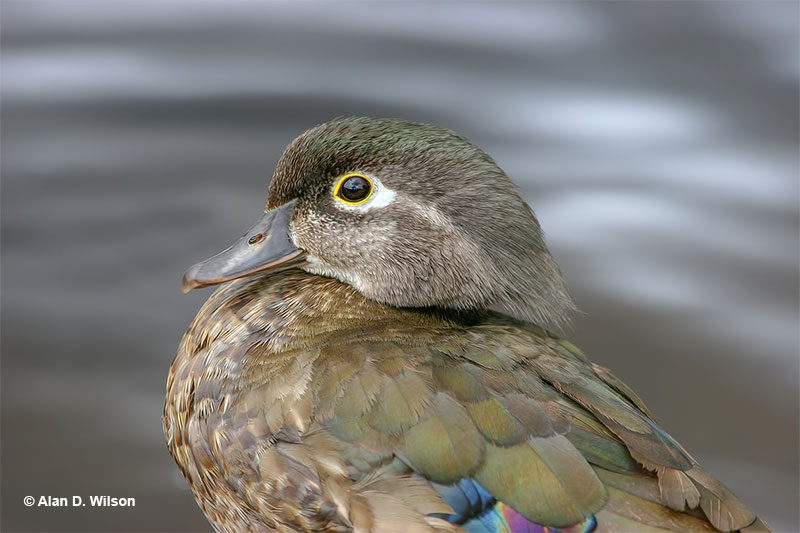
Ducks are familiar and handsome birds. They’re also easy and fun to watch! However, they don’t all act the same. Some dive and others dabble on the surface. Do they all eat the same food?
This list of duck facts is here to answer all your questions!
There’s always a lot to learn about these little creatures. These are our favorite facts about ducks, and there are 12 of those!
On this page
- 12. Ducks Are Incredibly Social
- 11. Ducks Waterproof Their Feathers
- 10. Down Feathers Help Keep Ducks Warm
- 9. Diving Ducks Eat a Lot of Mollusks
- 8. Some Ducks are Flightless
- 7. Ducks Have Been Around Since the Dinosaurs
- 6. Ducks are Fast Fliers
- 5. Few Duck Species Eat Fish
- 4. Most Female Ducks Look Very Different from Males
- 3. Ducklings Can Swim as Soon as They Hatch
- 2. Male Ducks Have Fancy Courtship Displays
- 1. Ducks Have Three Eyelids
12. Ducks Are Incredibly Social
Ducks are very social birds. Outside of the breeding season, the majority of duck species flock together for most of the year. Species such as the Red-breasted Merganser, scoters, and eiders can form groups of birds that number in the thousands! In migration and winter, ducks can also form flocks that include a dozen different duck species.
The most common example of this comes in the form of Mallards. Like other species, they are not too social during the breeding season, but they can be seen in big groups most of the year.
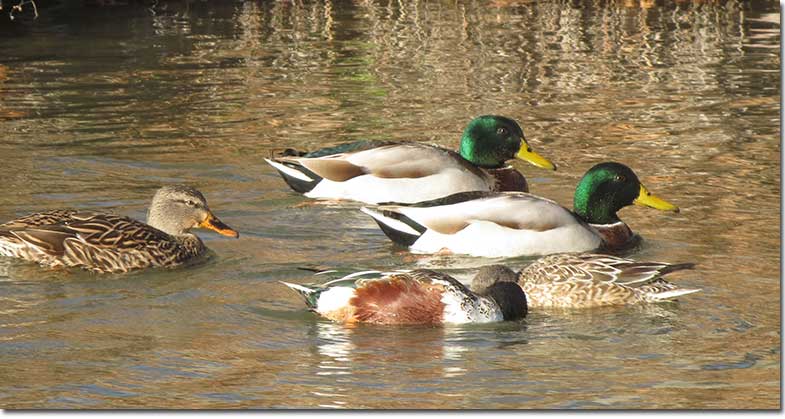
Ducks are often in larger groups. The only time they are more solitary is during the breeding season.
11. Ducks Waterproof Their Feathers
Waterproof feathers help ducks float on top of the water. Ducks coat their feathers with a waterproof substance taken from an oil gland known as the “uropygial gland.” However, their feathers also tightly link together to form air pockets. This feather structure also helps ducks stay afloat.
10. Down Feathers Help Keep Ducks Warm
Down feathers help ducks survive cold water temperatures and cold weather in general. These feathers are fuzzy, grow next to their body, and form small pockets of air. The air pockets are warmed by the duck’s body and act as excellent insulation. Eiders in particular, have large amounts of warm down that people also collect and use for coats, pillows, and quilts.
9. Diving Ducks Eat a Lot of Mollusks
Ducks that dive below the surface eat mussels and lots of other mollusks. Scoters, Buffleheads, Goldeneyes, and other diving ducks use their strong beaks to pick these food items from the bottoms of lakes, rivers, and rocky shores. They often eat mollusks below the surface during their dives.
Related: Is bread bad for ducks?
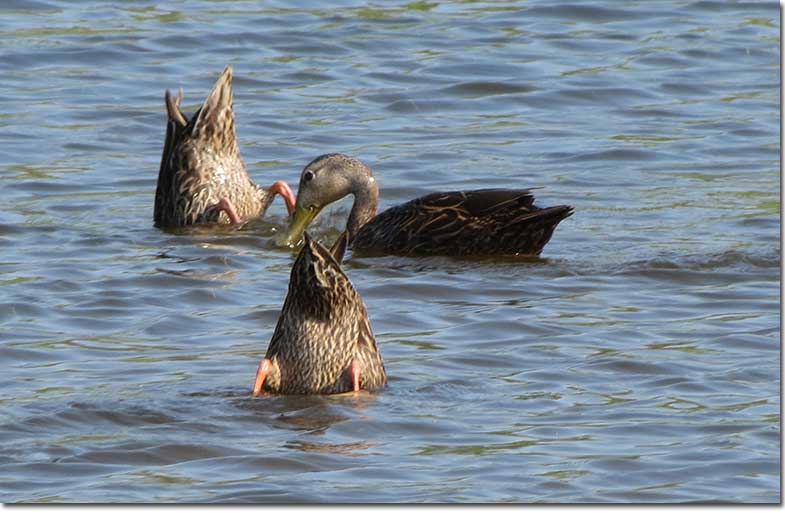
8. Some Ducks are Flightless
Although most duck species fly very well, a few species are flightless all year long. Three species of Steamer-Ducks have very short wings and never fly. These hardy ducks live in coastal waters of Patagonia. All other duck species also pass through an annual, one-month flightless phase when they change their feathers.
7. Ducks Have Been Around Since the Dinosaurs
Members of the waterfowl family have been around for many millions of years. Fossils of duck-like birds are known from more than 65 million years ago. This means that duck ancestors, very similar to present-day ducks, shared wetlands with dinosaurs!
Related: “Odd” Ducks
6. Ducks are Fast Fliers
Duck might be highly aquatic birds, but most can also fly very well. Mallards and many other duck species can leap off the water and immediately fly at high speeds. The Red-breasted Merganser has even been clocked at 80 miles per hour! This and other duck species need to fly fast to escape falcons and other raptors that prey on them.
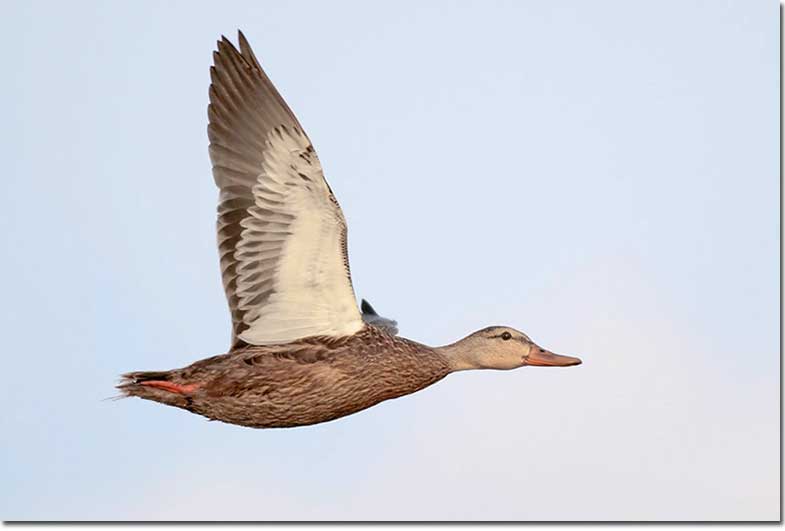
5. Few Duck Species Eat Fish
Despite sharing space with fish, not many duck species eat them. Several will eat small fish when they can catch them, but these birds usually feed on plants and small aquatic creatures. However, the mergansers only eat fish. These slender ducks have long, narrow beaks that help them catch small fish like Perch, young trout, and minnows.
4. Most Female Ducks Look Very Different from Males
Female ducks usually look very different from their male counterparts. For example, female Mallards are mottled buff and brown, while male Mallards have gray and brown birds with dark green heads. We see a similar situation for most other duck species. Females usually have mottled brown plumage to camouflage them while they sit on their nest.
Did you know? For most ducks, breeding gets pretty rough, and even more interestingly, ducks are some of the few species that have penises.
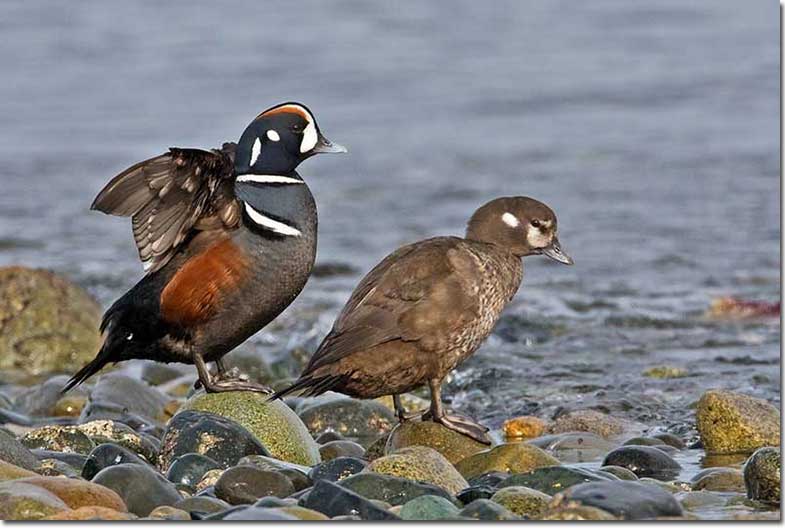
Pair of Harlequin Ducks
3. Ducklings Can Swim as Soon as They Hatch
Baby ducks become active as soon as they hatch. They are capable of swimming right away, and if they hatch next to the water, they immediately jump in and float around.
Ducklings that hatch far from water are led to the nearest pond, lake, or other wetland by their mother. They have to get to the water ASAP to avoid foxes and many other predators that would easily catch them on land.
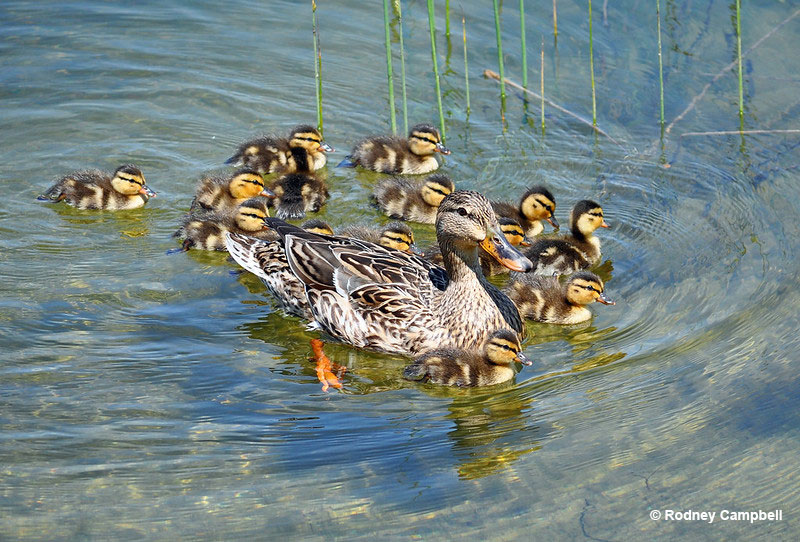
Baby ducklings with their mother.
2. Male Ducks Have Fancy Courtship Displays
Drakes often have elaborate courtship displays. Their movements typically showcase the colors and bold plumage patterns on their heads. Male Common Goldeneyes quickly toss their black and white head onto their back and give a buzzy call as they point their beak at the sky. Ruddy Ducks, Mallards, and other species move their heads up and down.
1. Ducks Have Three Eyelids
Waterfowl have to see underwater, and their eyes can be subjected to debris and wind during fast, constant flight. To protect their eyes, ducks have three eyelids! A nictating membrane covers and protects their eyes underwater and in flight. Their other two eyelids are “regular” eyelids that close over their eyes in sleep and protect them from debris.
Did some of these facts surprise you? Let us know in the comments!

